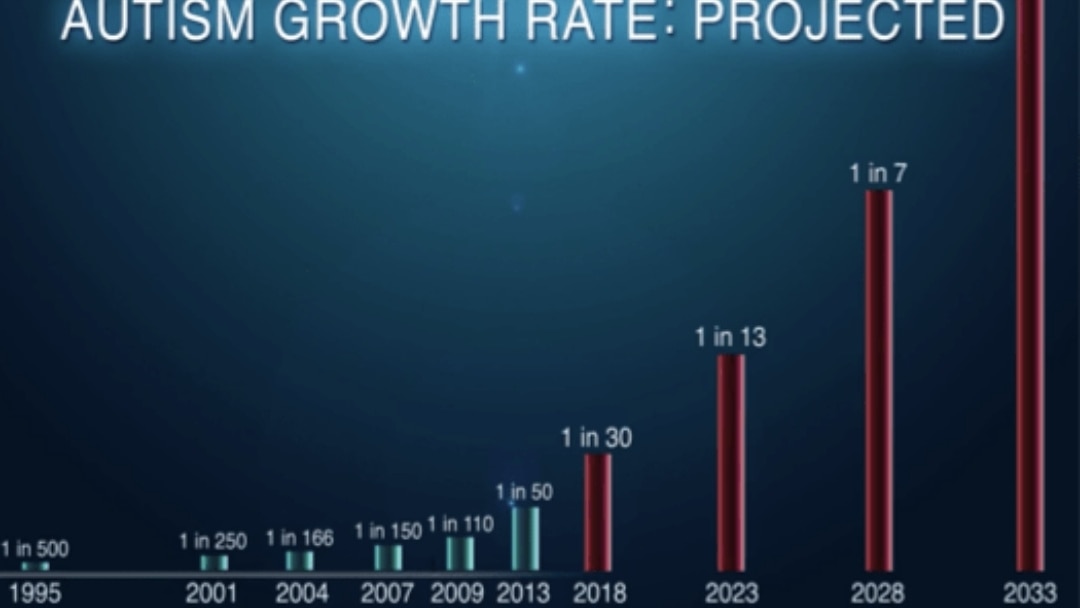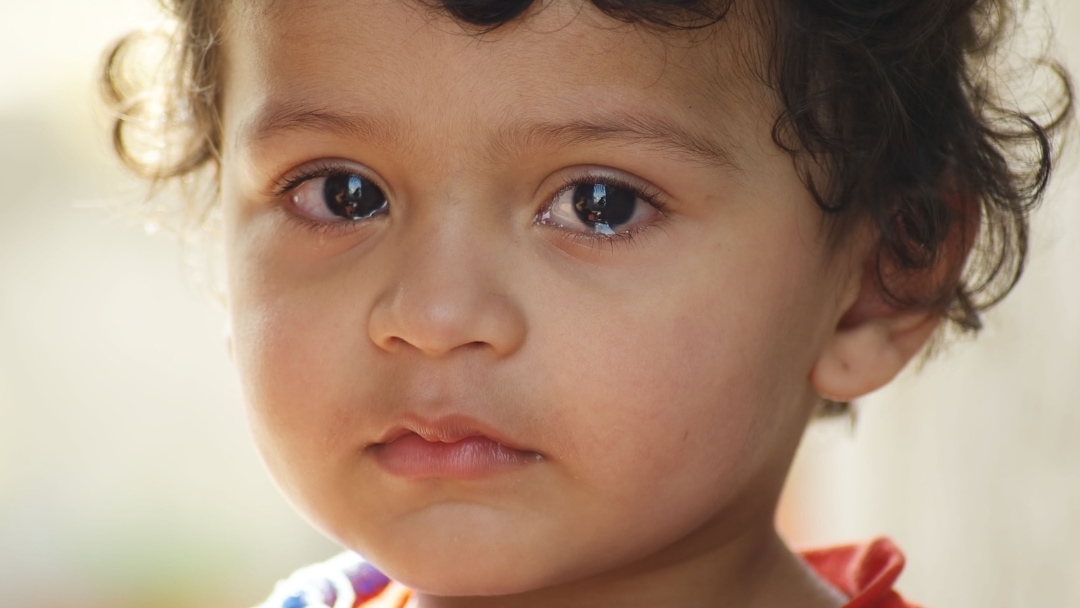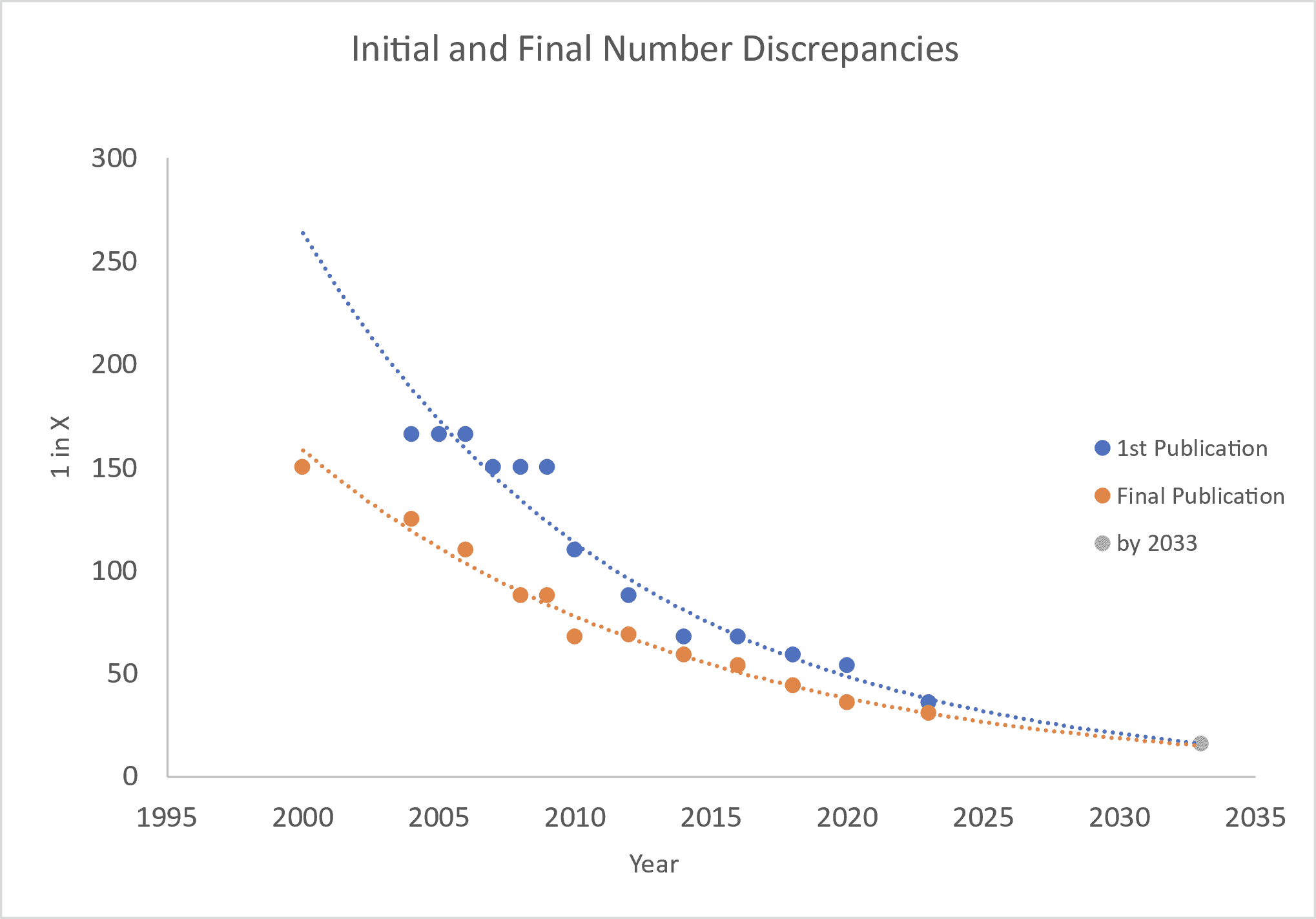The startling statistics are that millions of American children live with diagnosed chronic illnesses. According to a research paper published in Academic Pediatrics in 2011, at least 54% of American children have a diagnosed chronic condition. Below are the prevalence statistics of some of the most common illnesses affecting our children:
- Asthma: At least 1 in 8 children, and approximately 1 in 6 African American children
- Allergic eczema: 1 in 5 children
- Cancer: 178.3 per million children
- Hay fever (seasonal allergies): 2 to 3 out of every 5 children
- Food allergies: 1 in 12 children has a “true” food allergy (IgE mediated). It is estimated that 1 in 3 children (or more) has food intolerances (are sensitive to particular foods) and 1 in 17 children has a life-threatening food allergy. Nearly 2.5% of U.S. children may have an allergy to peanuts.
- Celiac disease: 1 in 80 children
- Obesity/overweight: 1 in 5 children
Millions of American children struggle with what were once termed “psychiatric” disorders: mood disorders, neurobehavioral disorders, developmental delays and learning disabilities:
- Autism: 1 in 30 children (JAMA, 2020)
- 1 in 36 children (CDC, 2023)
- 1 in 22 children in California (CDC, 2023)
- 4.66% of boys (CDC NCHS Data Brief, July 2023)
- ADHD: Almost 1 in 10 children
- Deveopmental or behavioral disorder: 16-18%
- Dyspraxia (impaired coordination and motor skills): 1 in 10 children
- Learning disability: 1 in 6 children
- Mental health disorder: 1 in 6 children
- Obsessive Compulsive Disorder: 1 in 100 children
- Pediatric depression or anxiety: 1 in 20 children
- Sensory Processing Disorder: 1 in 16 children
- Severe mood dysregulation (e.g., bipolar disorder): 1 in 30 children
For every child diagnosed with a chronic illness, there are many more undiagnosed children. There are millions of children with undiagnosed chronic illness.
Many American children are not diagnosed with a particular disease or disorder, but they still show signs of being chronically ill. Here are just a few signs that a child might be chronically ill:
- Chronic ear infections (more than 2 a year)
- Chronic sinus infections (more than 2 a year)
- Chronic diarrhea or loose stools
- Chronic constipation (does not have a bowel movement everyday or at least every other day; passes hard “pellet” stools, difficulty or straining with a bowel movement)
- Constant runny nose
- Reflux, abdominal pains, or other signs of gastrointestinal distress
- Sensory disorders (i.e., aversions to sights, sounds and smells)
- Recurrent urinary tract infections
- Obsessive or compulsive type behaviors
- Persistent skin rashes (eczema, psoriasis, cradle cap, rashes after eating)
- And many, many more . . .
The most stunning part of this epidemic is that all these seemingly disparate illnesses and disorders may all have the same underlying causes.
Still Looking for Answers?
Visit the Epidemic Answers Practitioner Directory to find a practitioner near you.
Join us inside our online membership community for parents, Healing Together, where you’ll find even more healing resources, expert guidance, and a community to support you every step of your child’s healing journey.
Sources & References
Ahn, R.R., et al. Prevalence of parents’ perceptions of sensory processing disorders among kindergarten children. Am J Occup Ther. May-Jun 2004;58(3):287-93.
American Lung Association. The Impact of Asthma. Accessed 2 Sep 2020.
Ben-Sasson, A., et al. Sensory over-responsivity in elementary school: prevalence and social-emotional correlates. J Abnorm Child Psychol. 2009 Jul;37(5):705-16.
Bethell, C., et al. A National and State Profile of Leading Health Problems and Health Care Quality for US Children: Key Insurance Disparities and Across-State Variations. Academic Pediatrics, May–June 2011, Volume 11, Issue 3, Supplement, p. S22–S33.
Bitsko, R.H., et al. Epidemiology and Impact of Health Care Provider-Diagnosed Anxiety and Depression Among US Children. J Dev Behav Pediatr. 2018 Apr 24.
Blaxill, Mark, et al. Autism Tsunami: the Impact of Rising Prevalence on the Societal Cost of Autism in the United States. J Autism Dev Disord. 2022 Jun;52(6):2627-2643.
Boat, T.F., et al. Prevalence of Learning Disabilities. Mental Disorders and Disabilities Among Low-Income Children. Washington (DC): National Academies Press (US); 2015 Oct 28. 16.
Centers for Disease Control and Prevention. Data & Statistics on Autism Spectrum Disorder. Accessed 4 Apr 2023.
Centers for Disease Control and Prevention. Data and Statistics on Children’s Mental Health. Accessed 2 Sep 2020.
Centers for Disease Control and Prevention. Prevalence and Characteristics of Autism Spectrum Disorder Among Children Aged 8 Years — Autism and Developmental Disabilities Monitoring Network, 11 Sites, United States, 2020. Accessed 24 Mar 2023.
Gupta, R.S., et al. The Public Health Impact of Parent-Reported Childhood Food Allergies in the United States. Pediatrics. 2018 Dec;142(6). pii: e20181235.
Hertz-Picciotto, I., et al. The rise in autism and the role of age at diagnosis. Epidemiology. 2009 Jan;20(1):84-90.
Li, Q., et al. Prevalence of Autism Spectrum Disorder Among Children and Adolescents in the United States From 2019 to 2020. JAMA Pediatr. 2022 Sep 1;176(9):943-945.
Maenner, M.J., et al. Prevalence and Characteristics of Autism Spectrum Disorder Among Children Aged 8 Years – Autism and Developmental Disabilities Monitoring Network, 11 Sites, United States, 2018. MMWR Surveill Summ. 2021 Dec 3;70(11):1-16.
Nevison, C.D., et al. Diagnostic Substitution for Intellectual Disability: A Flawed Explanation for the Rise in Autism. J Autism Dev Disord. 2017 Sep;47(9):2733-2742.
Perrin, J., et al. The Increase of Childhood Chronic Conditions in the United States.
Rosen, N.E., et al. The Diagnosis of Autism: From Kanner to DSM-III to DSM-5 and Beyond. J Autism Dev Disord. 2021; 51(12): 4253–4270.
Siegel, D.A., et al. Counts, incidence rates, and trends of pediatric cancer in the United States, 2003-2019. J Natl Cancer Inst. 2023 Nov 8;115(11):1337-1354.
Treffert, D.A. Epidemiology of Infantile Autism. Arch Gen Psychiatry. 1970;22(5):431-438.
Waterhouse, L. Autism overflows: increasing prevalence and proliferating theories. Neuropsychol Rev. 2008 Dec;18(4):273-86.
Weitzman, Carol. How Can We Support Children and Families With Information Gleaned From Developmental Screening? Pediatrics. 2019 Nov 14. pii: e20192936.
Whitney, D.G., et al. US National and State-Level Prevalence of Mental Health Disorders and Disparities of Mental Health Care Use in Children. JAMA Pediatr. 2019 Feb 11.
Zablotsky, B., et al. Estimated Prevalence of Children With Diagnosed Developmental Disabilities in the United States, 2014–2016. National Center for Health Statistics. NCHS Data Brief, No. 291, Nov 2017.
Zablotsky, B., et al. Prevalence and Trends of Developmental Disabilities among Children in the United States: 2009-2017. Pediatrics. 2019 Oct;144(4):e20190811.
Zablotsky, B., et al. Diagnosed Developmental Disabilities in Children Aged 3-17 Years: United States, 2019-2021. NCHS Data Brief. 2023 Jul;(473):1-8.




